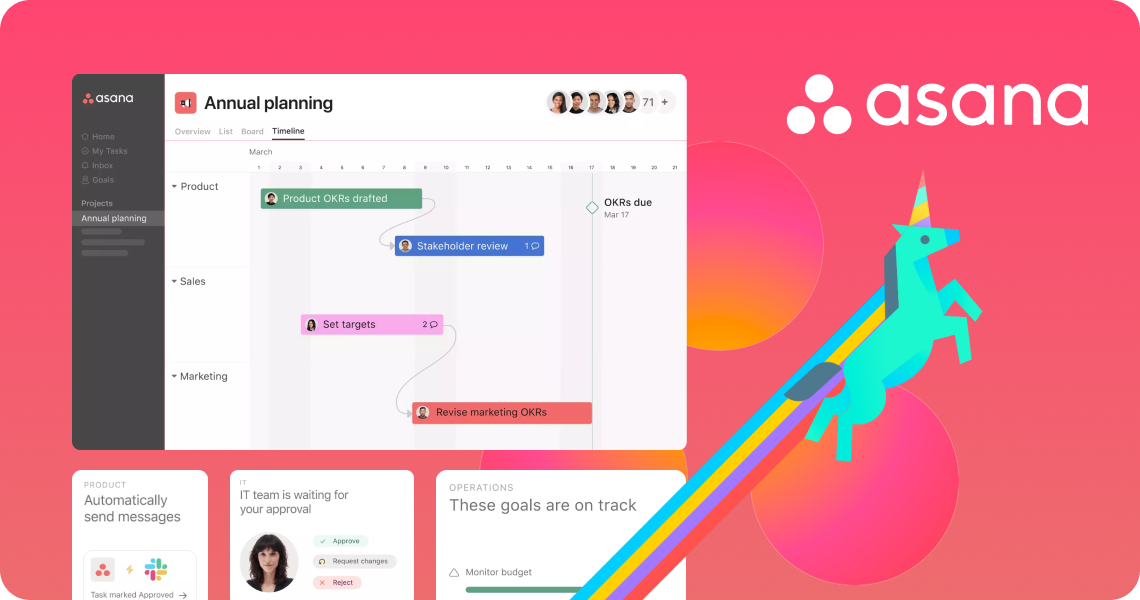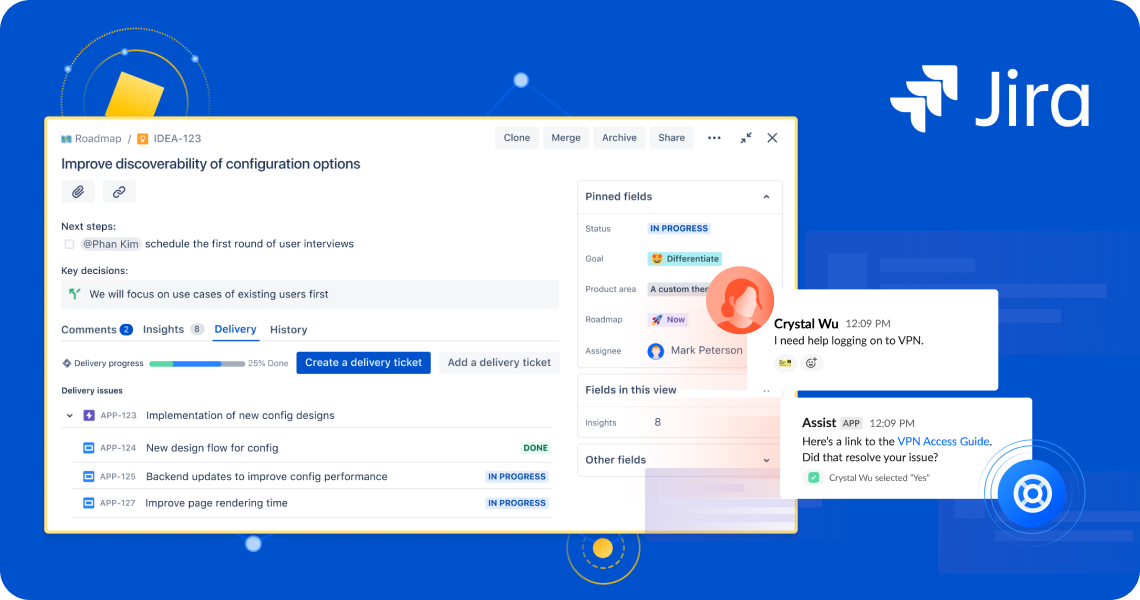Introduction
Regardless of a business’s size, a well-structured project management system is crucial. The implementation of a robust project management system not only streamlines internal work but also plays a crucial role in maintaining and improving customer relationships. This article will delve into the reasons why such systems are indispensable, focusing on their connection to order and organization, along with their role in tracking and preserving records. It will also examine popular software choices like Trello, Asana, Jira, and Monday in more detail. In addition, we will delve into the potential advantages that utilizing Trello and Monday can bring to customer satisfaction.
The Crucial Role of Order and Organization
A. Process optimization
An effective project management system is essential for streamlining business processes and ensuring that tasks are completed on time and within budget. This goal is achieved by providing a clear framework for project planning, execution, and monitoring, which helps eliminate confusion and prevent unnecessary delays. Team members can easily prioritize tasks, set deadlines, and allocate resources when they use a well-structured project management system.
B. Improving communication
Clear and concise communication is crucial to the success of a project. Project management systems facilitate better communication by providing a centralized platform for team members to share information, ask questions and report progress. This ensures everyone is on the same page and reduces the risk of misunderstandings.
C. Improving cooperation
Project management systems facilitate collaboration by allowing team members to work together on tasks, share files and provide real-time feedback. This encourages teamwork and ensures that everyone is working towards the same goals, ultimately leading to better project deliverables. In addition, many project management tools offer integration with other software platforms such as file sharing tools, video conferencing applications and messaging systems to further increase collaboration and efficiency.
The Significance of Tracking and Archiving
A. Ensuring project progress
One of the most important features of project management systems is the ability to track the progress of tasks and projects. By setting milestones and deadlines and monitoring progress, team members can quickly identify potential bottlenecks and delays and take corrective action before they become serious problems. This not only ensures that projects are completed on time, but also contributes to overall customer satisfaction.
B. Saving records for future reference
Project management systems are also useful for archiving project information, such as tasks, documents and communication logs. This can be very valuable for future reference as it allows team members to review previous projects and identify areas for improvement or learn from past successes. Archiving project information also helps ensure that valuable knowledge and expertise are not lost when team members leave the organization or move to other roles.
C. Project performance analysis
By tracking and archiving project data, companies can gain valuable insights into overall project performance. This allows trends, weaknesses and areas for improvement to be identified so that companies can make data-driven decisions and improve their project management processes over time. Regular analysis of project performance also allows companies to continuously adjust and improve their approach and remain competitive.
D. Popular project management software
Crafting excellence in business cards requires the strategic utilization of project performance analysis. This blog delves into the power of tracking and archiving project data, providing organizations with profound insights into their overall performance. Immerse yourself in the narrative as we unravel how this analytical approach unveils trends, weaknesses, and areas for improvement, enabling businesses to make informed decisions. Explore with us how regular project performance analysis becomes the driving force for maintaining a competitive edge, allowing organizations to continuously adjust and refine their project management processes for enduring success.
Trello
Overview and features
A popular project management tool that organizes tasks and projects with a visual approach, Trello is based on the Kanban method where tasks and projects are represented by cards and boards respectively, team members can easily create, assign and prioritize tasks. Trello also offers extensive integration with other tools and platforms such as Google Drive, Slack and GITHUB, making it a versatile choice for companies of all sizes.
Use cases and benefits
Trello is an ideal choice for companies looking for a simple and intuitive project management solution. Visual task management allows team members to understand their responsibilities and easily track project progress. In addition, Trello’s rich integration features make it easy to integrate into existing workflows and processes.
Asana
Overview and features
Asana is a powerful project management tool with a wide range of features that help teams plan, organize and track their work. Asana has multiple views, including lists, dashboards and timelines, allowing teams to choose the best way to visualize their projects. Key features include task management, file sharing, goal setting and customizable dashboards. Asana also integrates with many other tools such as Salesforce, Microsoft Teams and Adobe Creative Cloud, making it a popular choice.
Use cases and benefits
Uses and benefits Asana is suitable for organizations looking for a comprehensive project management solution tailored to their specific needs. Its powerful feature set and integration capabilities make it a powerful tool for managing complex projects and organizing workflows. Asana’s flexible views and customizable dashboards help team members stay organized and track progress, increasing efficiency and productivity.
Jira – Jira Software
Overview and features
Jira is a project management tool designed specifically for software development teams. It offers a range of features including issue tracking, agile reporting and customizable workflows to help teams plan, track and release high-quality software. Jira also offers integration with popular development tools such as Git, Bitbucket and Confluence, making it a popular choice for software development teams.
Use cases and benefits
Jira is an ideal choice for software development businesses because it supports agile methodologies and offers a range of specialized features designed to streamline the development process. Powerful issue tracking and customizable workflows make it easy for teams to manage and prioritize their work, while its integrated features enable seamless collaboration between developers, testers and project managers.
Manday
Overview and features
Manday is a flexible project management tool that provides a range of features for teams to plan, track and collaborate on projects. Manday’s key features include customizable dashboards, automation capabilities, and a wide range of industries and use cases. templates and more. It can also be integrated with popular tools like Slack, Zoom and Google Calendar, making it a versatile choice for companies of all sizes.
Use cases and benefits
Monday is an excellent choice for organizations looking for a customizable and scalable project management solution. A wide range of features and templates cater to a variety of industries, while integration features enable easy integration into existing workflows. Furthermore, Monday’s automation features reduce manual processes and increase efficiency, making it a popular choice for companies looking to streamline their project management processes.
Based on our experience, we recommend using Trello and Monday.
Trello Benefits for Seamless Client Interaction
1. Collaboration and communication
One of the main benefits of using Trello with clients is its ability to facilitate collaboration and communication: By inviting customers to Trello boards, companies can provide real-time updates on project progress, share files and receive feedback. This level of transparency builds trust, strengthens customer relationships and ultimately leads to increased loyalty satisfaction.
2. Visualization of project progress
Trello’s visual approach to project management allows customers to track project progress at a glance. Using color-coded labels, checklists and progress bars, companies can clearly communicate project status to clients, set expectations and reduce the risk of misunderstandings and delays.
Unlocking Client Success with Monday
1. Customizable workflows
With Monday’s versatile boards and templates, businesses effortlessly mold client-specific workflows that align with the distinct demands of every project. This commitment to customization ensures clients stay informed about each project phase, effortlessly tracking progress and bolstering satisfaction and trust.
2. Real-time updates and alerts
Experience the power of real-time updates and alerts with Monday, as businesses effortlessly relay project status, changes, and issues to clients. This engagement fosters a dynamic client involvement, resulting in elevated satisfaction levels and sustained loyalty.
Tips for Making the Right Choice
A. Understanding and Prioritizing Your Organization’s Project Management Needs
A strategic approach to choosing a project management tool starts with a comprehensive evaluation of the organization’s needs. This includes a detailed analysis of project types, team size and structure, and the necessary features or integrations. By prioritizing these requirements, businesses can strategically align their choice of a project management system with their operational objectives.
B. Navigating the Landscape of Project Management Tools
After pinpointing the organization’s needs, the next step is to delve into a detailed comparison of features and pricing among different project management tools. This involves crafting a checklist of indispensable features, scouring through customer reviews for insights, and seeking firsthand experience through free demos or trials. This meticulous process ensures businesses find a tool that aligns seamlessly with their requirements.
C. Assessing Expansion Capabilities and Seamless Integration in Project Management Tools
The final stage in selecting a project management tool is a comprehensive review of expansion and integration possibilities. This strategic assessment ensures the software’s adaptability to organizational growth and its harmonious integration into established workflows. By choosing a scalable and compatible project management system, companies can ensure the longevity and success of their project management processes.
In conclusion
With tools like Trello, Asana, Jira and Monday offering a range of features and benefits to help companies manage projects more efficiently and effectively, implementing a project management system is essential to streamline internal operations and improve customer relations. By working with Trello and Monday, companies can also increase customer satisfaction and build stronger relationships. When choosing a project management system, it is important for companies to assess their needs, compare features and price, and consider scalability and integration capabilities. By doing so, they can find the right software for their organization and enjoy the many benefits of a well-designed project management system.










